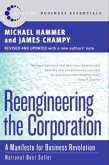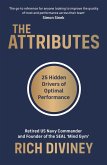This book is about the difference between being busy and performing. Many organisations are full of activity. People attend meetings, write emails, prepare reports, and move from one task to the next with a sense of urgency. The pace is fast and the workload is heavy. Yet, despite the effort, progress often feels slow. Results do not match the intensity of the work. The organisation appears active, but impact is limited. The gap between effort and outcome grows, creating frustration, fatigue, and a constant feeling that things should be better than they are.
This book examines that gap. It explains why being busy is not the same as being effective. It shows how organisations can become trapped in cycles of reactivity, where work is started quickly but rarely completed with clarity. It outlines how unclear priorities, constant interruptions, poor planning rhythms, and the absence of ownership create environments where everyone works hard, but few meaningful results are achieved.
Performance is not created by working faster or putting in more hours. It is created by choosing what matters, working with focus, and completing work before starting new work. Performance comes from clarity of purpose, reliable execution routines, and the ability to protect time for thinking and meaningful action. It is the result of an environment that supports depth rather than speed, quality rather than motion, and outcomes rather than activity.
This book provides practical guidance on how to build such an environment. It does not offer slogans or motivational language. It does not suggest that improvement requires unusual talent or extraordinary effort. Instead, it focuses on changing the structures and habits that shape how work is done. Small changes in rhythm, communication, prioritisation, and ownership can produce significant improvements in performance. When these changes are applied consistently, the organisation becomes calmer, more confident, and more capable.
The writing in this book is direct, clear, and free from unnecessary theory. The ideas are based on real behaviours and real organisational patterns. Leaders will recognise the situations described because they are common in many workplaces. The purpose of this book is not to criticise these patterns, but to show how they can be changed in a practical and sustainable way.
The message throughout the book is simple. If everyone is busy, no one is performing. Busyness disperses attention. It scatters effort. It exhausts people without moving the organisation forward. Performance concentrates attention. It aligns effort. It turns work into visible progress. When work flows cleanly and consistently, progress becomes normal rather than exceptional.
This book is written for leaders who want to improve execution in their teams and organisations. It is for those who see effort being poured into work without seeing equivalent progress. It is for those who want to build an environment where people can work with clarity and pride. It is for those who know that the current pace is unsustainable and that better results are possible through smarter, calmer, and clearer ways of working.
If you are reading this, you likely do not need convincing that change is necessary. You see the signs of busyness every day. You hear it in conversations about workload. You see it in the number of projects that are half complete. You feel it in the fatigue of teams who are trying to keep up. What is needed is not more urgency, but more clarity. Not more activity, but more completion. Not more pressure, but more structure.
Dieser Download kann aus rechtlichen Gründen nur mit Rechnungsadresse in A, B, CY, CZ, D, DK, EW, E, FIN, F, GR, H, IRL, I, LT, L, LR, M, NL, PL, P, R, S, SLO, SK ausgeliefert werden.









